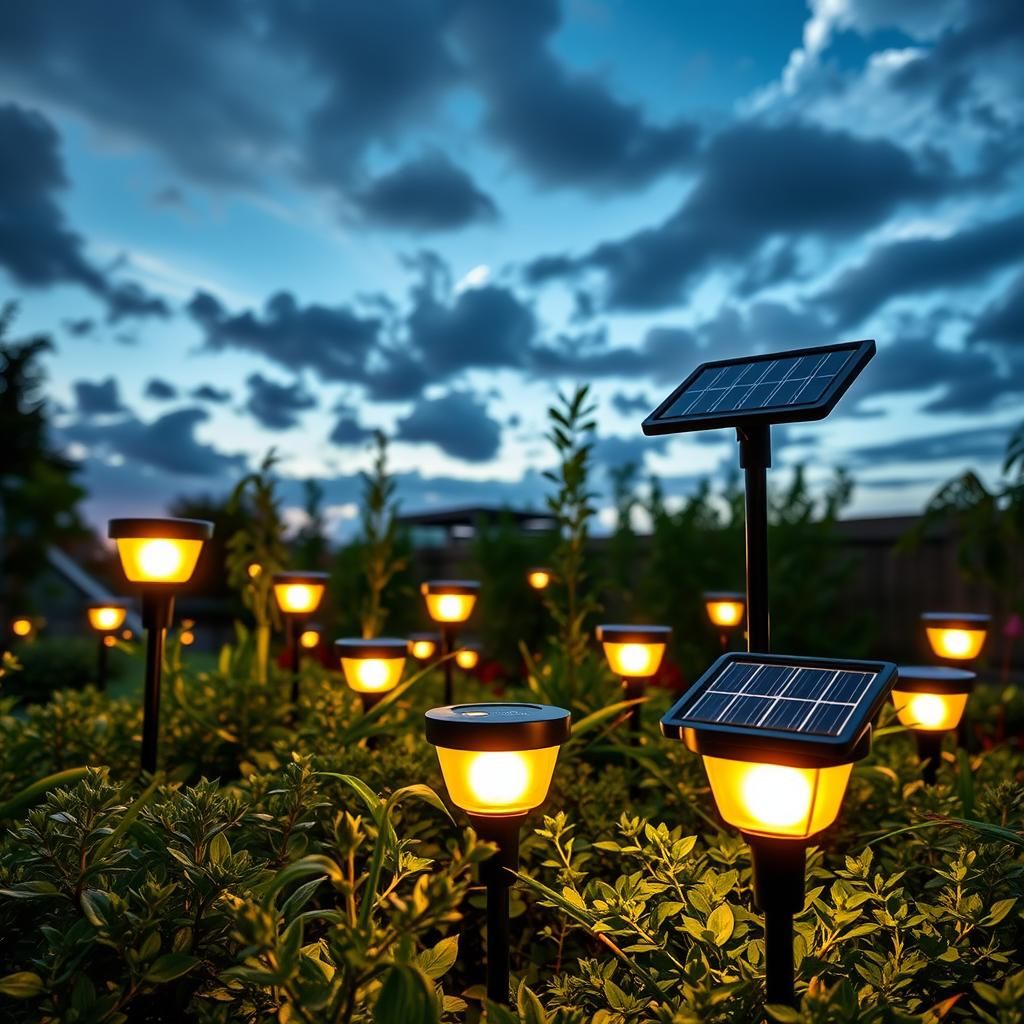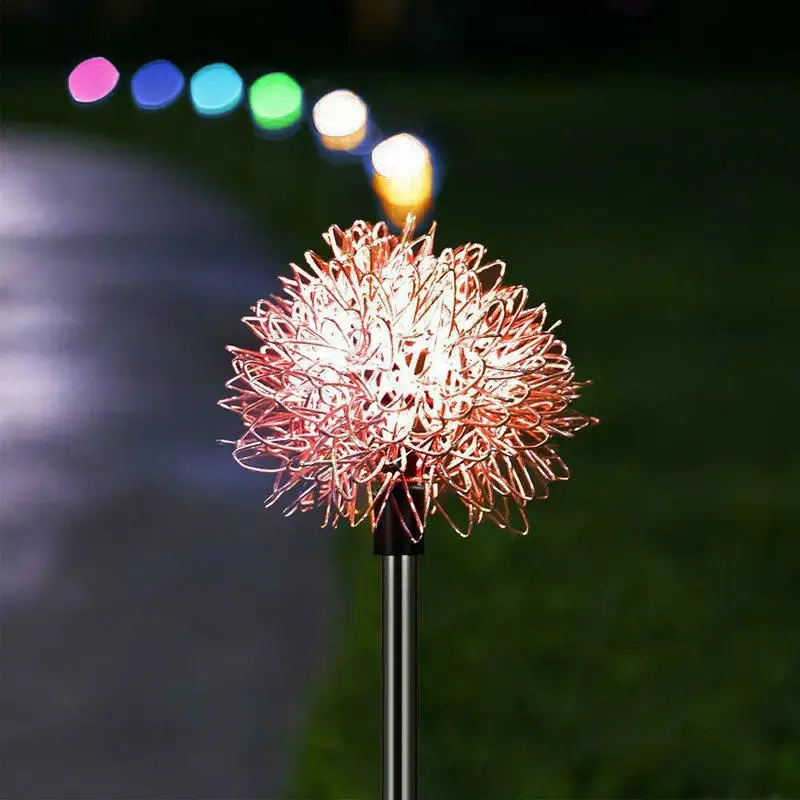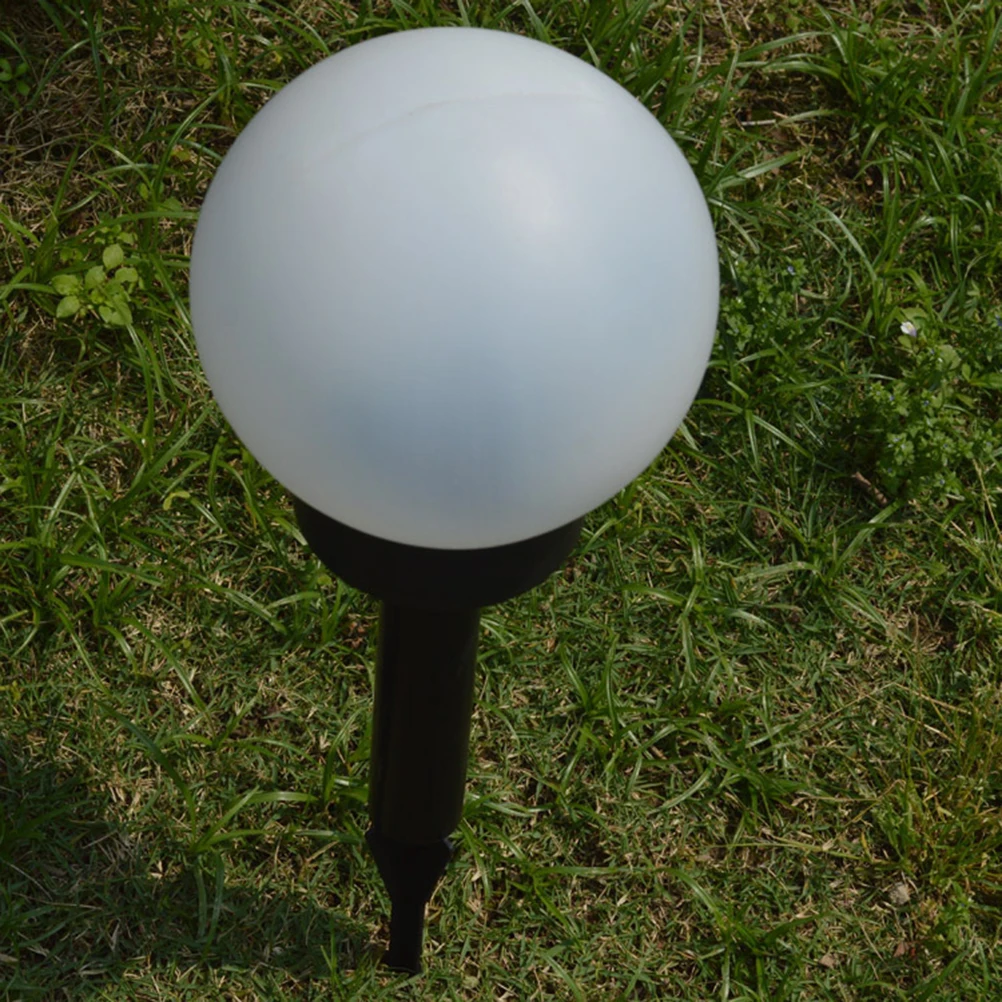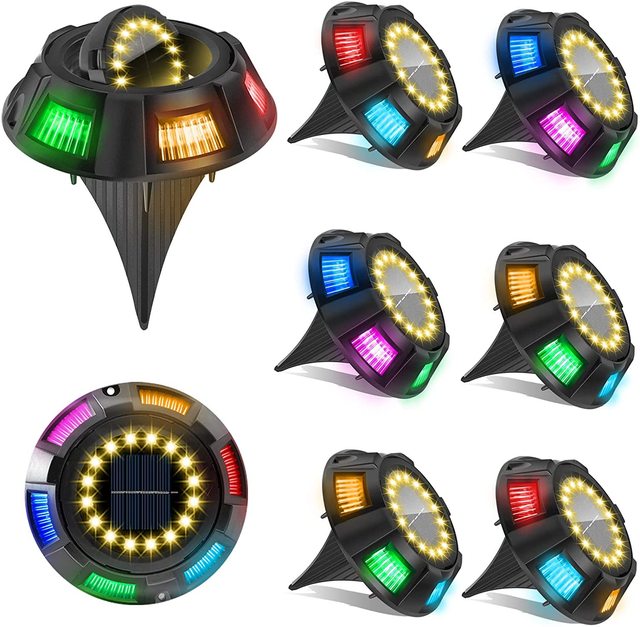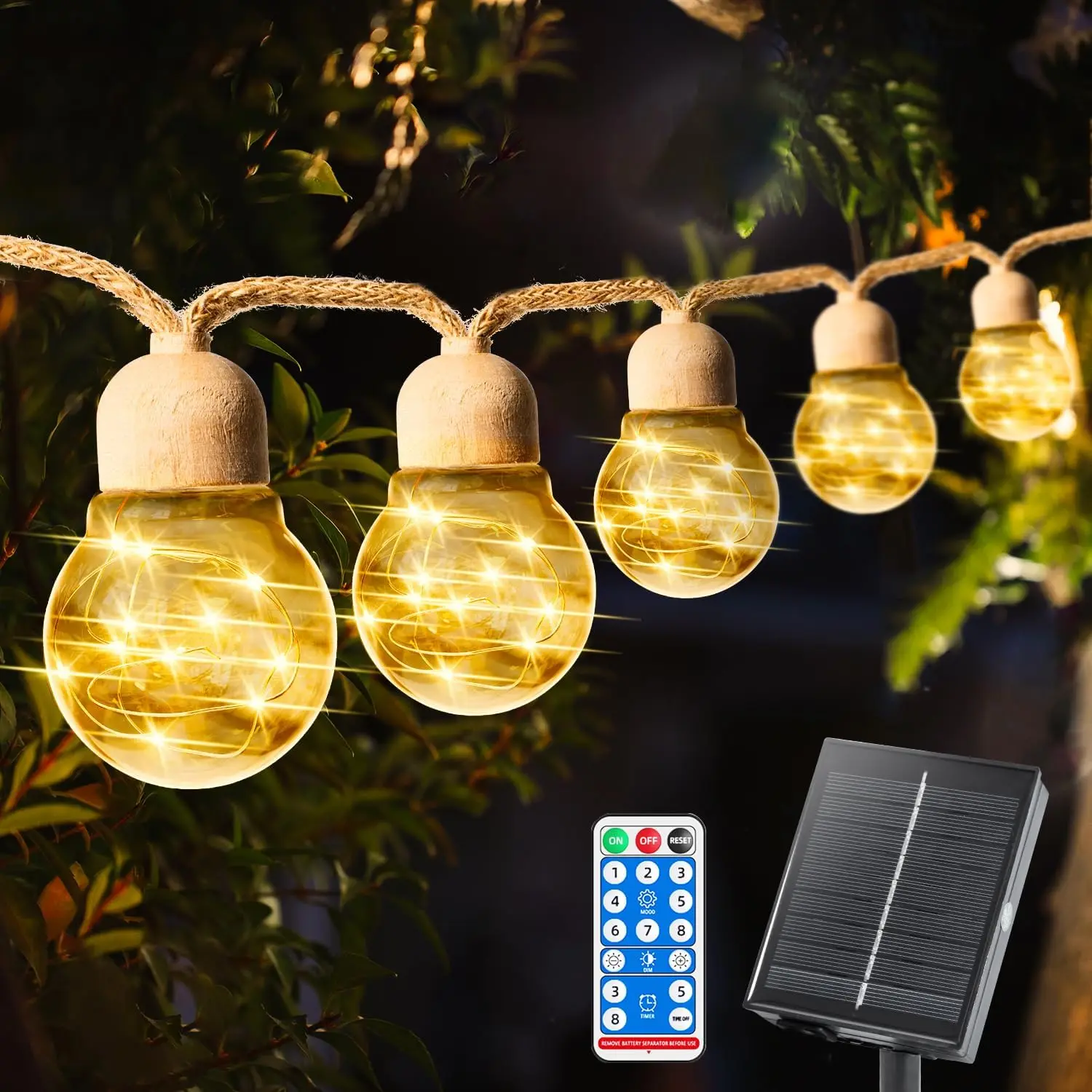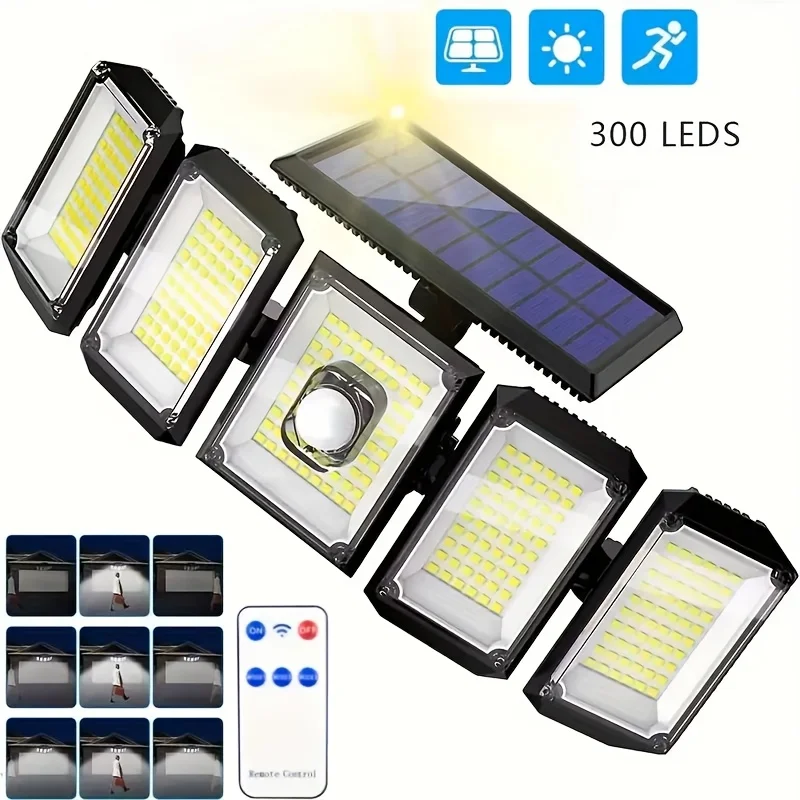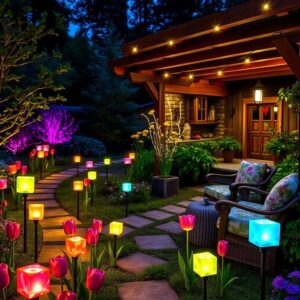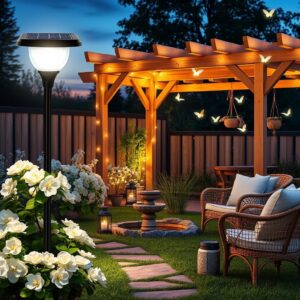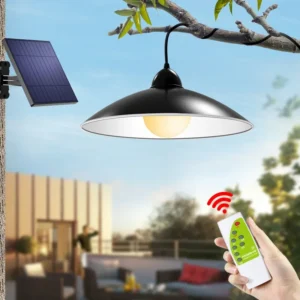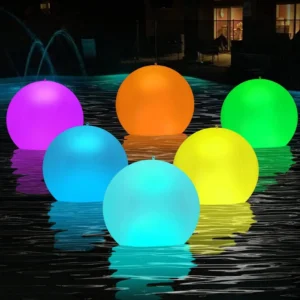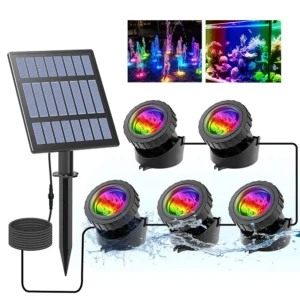Solar Pendant Lights – Indoor & Outdoor Waterproof Illumination
1. Introduction
Ever wondered if those charming solar lights lining your garden paths or perched on your deck truly need to soak up direct sunlight to shine as brightly as promised? Solar lights have surged in popularity, turning ordinary outdoor spaces into inviting, softly glowing retreats without the hassle of wiring or rising electricity bills. But the big question remains: do solar lights need direct sunlight to work their magic?
The straightforward answer is—while direct sunlight is ideal, solar lights don’t necessarily demand it to function. These nifty little devices are designed to gather energy from the sun’s rays throughout the day, converting that glow into light after dusk. But here’s the catch: understanding how sunlight exposure affects their performance is key to getting the best from them.
Placing solar lights without considering light availability can lead to disappointing results—dim glows, flickering, or shorter nightly run times. Yet not every garden corner basks in full sun all day. Trees, buildings, or overcast weather often mean shadows and indirect light instead of bright beams. That’s where knowing the facts comes in, separating myth from reality, and discovering smart placement tricks.
In this article, we’ll unravel the puzzle of solar light sunlight needs, debunk common myths, and share practical tips so you can confidently position your solar lights for steady, enchanting illumination every night. Whether you’re brightening a shady backyard nook or a sun-drenched terrace, this guide will help you let your solar lights sparkle with sustainable ease. Ready to see how sunlight (or its softer cousin, indirect light) powers your garden’s nighttime charm? Let’s dive in.
Color Changing Solar Dandelion LED Garden Stake Lights
2. Common Myths About Solar Light Sunlight Requirements
One of the most persistent myths about solar lights is that they absolutely must bask in direct sunlight all day to work properly. This idea has been passed around so often that many assume if their solar lights don’t sit under full, blazing sun, they’re nothing but dim, useless decorations. But here’s the truth: solar lights are surprisingly adaptable and can charge effectively in more than just direct sunlight.
While direct sun definitely supercharges the panels, it’s not the only way they gather energy. Solar panels are designed to capture and convert light energy, and that includes indirect sunlight and even some shaded conditions. Think of it like this: a solar panel is a bit like a smart sponge, soaking up light that filters through clouds, tree leaves, or bounces off nearby surfaces. Of course, the more light they get, the better—but it doesn’t have to be blazing sun all day.
Scientific backing supports this flexibility. For instance, Eneradar’s detailed breakdown[¹] explains that while direct sunlight is ideal, solar panels still harvest useful energy from diffuse and reflected light. This means that on cloudy days or in partially shaded spots, your solar lights keep collecting power, just at a slower pace. It also debunks the assumption that solar lights cease to work on less-than-perfect days.
This myth often leads people to place their lights in awkward, impractical spots just chasing full sun exposure, which isn’t always feasible or even necessary. Knowing that solar lights can thrive in indirect light frees you to choose spots that highlight garden features or create ambient lighting without sacrificing function.
In summary, solar lights don’t demand a sun-drenched throne to perform their magic. They’re built for real gardens and patios where light shifts throughout the day. Embrace their versatility: whether draped under a tree’s dappled canopy or nestled beside a north-facing wall catching gentle reflected light, your solar lights will still glow come nightfall, bringing a soft, sustainable sparkle to your outdoor sanctuary.
[¹] Source: https://eneradar.com/do-solar-lights-need-direct-sunlight-myths-facts-tips-2025/
Solar Lanterns LED Outdoor Garden Yard Decoration
3. How Solar Lights Charge: Direct vs. Indirect Sunlight
Think of solar lights as thirsty little plants soaking up sunlight to bloom at night. Their solar panels act like leaves, catching rays to turn into energy stored in batteries. But here’s the real scoop: yes, direct sunlight is like the richest, purest fuel, charging solar panels fastest and fullest. It’s the straight shot of energy that helps solar lights glow brightest and longest once dusk falls.
However, these clever panels aren’t fussy—they can sip on indirect sunlight too. Even on overcast days, when the sky wears a blanket of clouds, solar cells still catch scattered light and keep charging, though at a slower pace. So, while a sunbeam directly hitting the panel for four to six hours a day is ideal, solar lights often power on long after the sun ducks behind trees or buildings. Indirect light, shaded spots, or a patchy sun path still feed enough energy for decent nighttime magic, albeit with a slightly shorter spotlight.
During cloudy or gloomy conditions, solar panels work quietly in the background, gathering faint ambient glow. It’s like charging your phone on a café’s dim light rather than bright office lamps—it takes longer, but it still happens. On days with low light levels, your solar lights might dim slightly or not shine as late, but they won’t go dark immediately.
Typically, a good rule of thumb is aiming for 4 to 6 hours of combined direct or indirect sunlight to unlock optimal charging. So, placing your solar light where it can catch afternoon sun filtered through leaves or morning sun peeking past clouds is smarter than hiding it under thick shade.
In short: direct sun equals quick, full power; indirect sun means slower but steady charging that keeps your garden glowing. Knowing this helps you choose spots that balance sunlight exposure and style, so your solar-lit garden looks enchanting every evening—even when the sun plays coy.
For more on how solar light charging varies with sunlight, check out Linkind’s insights and Enkonn Solar’s take on cloudy days.
G40 Solar String Lights – Outdoor Patio LED Lights
4. Factors Affecting Solar Light Efficiency
When it comes to solar lights, how brightly and how long they shine doesn’t just depend on sunlight alone. Several key factors play a role in the magic—or the dimness—you see after dusk. Let’s break down the essentials, no fluff.
Battery Capacity and Charging Cycles
Think of the battery as the heart of your solar light. Its size and quality dictate how much energy it can store during the day and release at night. A bigger, well-made battery holds more charge, meaning longer illumination. But batteries aren’t immortal—they wear down after many charging cycles. Over time, they store less juice, and those twinkling garden lanterns might grow faint or flicker early. Keeping an eye on battery health can save you from disappointing dark nights.
Duration and Intensity of Sunlight Exposure
Solar panels gather power like little energy sponges. The longer and stronger the light they soak up, the more energy they stash away. Direct sunlight is the jackpot—full and intense—charging panels efficiently in just a few hours. But don’t despair if your garden is only kissed by indirect or filtered light. Even under leafy canopies or on partly cloudy days, solar panels still gather power, just at a slower pace. If sunlight is scarce or weak, expect shorter lighting time after sunset.
Environmental Factors: Shade from Trees, Buildings, and Weather
Nothing steals a solar light’s glow faster than heavy shade creeping over its panel. Tall trees, fences, or buildings can block precious rays, turning your garden’s evening sparkle into a dull flicker. Weather plays a sneaky role too—gray skies and rain clouds dim the solar harvest. Though panels can gather some light on cloudy days, persistent overcast conditions mean they’ll charge less, and your solar light’s performance will naturally taper off.
Impact of Dirt and Debris on Solar Panel Surface
Imagine trying to catch sunlight through a dusty, smudged window—solar panels face the same challenge when dirt, leaves, or grime settle on them. A filthy panel blocks light, reducing the energy collected daily. To keep your solar lights beaming bright, wipe the panels regularly. It’s a quick fix that can dramatically boost their charging efficiency and keep your garden glowing like a well-tended campfire.
Reduced Charging Leading to Dimmer Lights or Shorter Illumination Times
When any of these factors—weak batteries, limited sunlight, harsh shade, or dirty panels—conspire against your solar light, the result is predictable: dimmer light after dark and shorter hours of glow. Your garden’s nighttime magic dims, diminishing the enchanting atmosphere you worked to create.
In short, solar light efficiency is a dance between power storage, sunlight availability, and a clean, free-to-shine panel. Understanding these factors helps you place your lights smartly and keep them gleaming, even when the sun isn’t shining at full force.
Solar Ground Light LED Rotating Spotlights for Outdoor Use
5. Practical Solar Light Placement Tips
When it comes to solar lights, where you put them can make all the difference between a garden that twinkles with life and one that barely glows. The goal? Find spots where your solar panels soak up enough daylight to store energy and release it as magic once the sun dips below the horizon. Let’s keep it straightforward and effective.
Start by scouting areas that get at least partial sunlight throughout the day. Full, blazing sun isn’t mandatory—morning or afternoon rays will do fine. Avoid tucking your solar lights near tall buildings, thick tree canopies, or dense shrubbery. These cast shadows that can starve your panels of precious photons, leaving you with flickering or dim lights. Think about how the sun moves across the sky too; a spot basking in sunshine at noon might be shadowed by late afternoon.
Next, pay attention to the angle of your panels. Like solar sunflowers, panels perform best when tilted to face the sun’s path for maximum absorption. Adjust them seasonally if you can, to track changes in daylight angle throughout the year. Don’t worry about pinpoint precision—just a thoughtful tilt can boost how much sunlight trickles into your little power source.
Here’s a quick trick: position your solar lights near reflective surfaces such as light-colored walls, patios, or even smooth stones. These sneaky reflectors bounce extra light onto your solar panels, giving them a little daylight bonus. It’s like whispering an extra spark into the battery without any extra effort.
Finally, keep your solar panels clean and happy. Dust, dirt, and leaves are like tiny night thieves stealing sunbeams that could have charged your lights. A simple wipe-down with a damp cloth every few weeks does wonders. In wetter climates, rinse off grime to make sure nothing dulls the solar sip.
With these practical pointers, your solar lights will soak in enough sun—direct or gentle—and brighten your garden nights with steady, welcoming glows. No fuss, no fancy gadgets, just smart placement and a little care turning your outdoor space into a cozy evening retreat.
Solar Outdoor String Lights – 9.5m, 20 Bulbs, Waterproof, 8 Modes
6. DIY Hacks to Boost Solar Charging in Shaded or Low-Light Areas
Sometimes, your dream spot for solar lights isn’t drenched in sunlight. Maybe a towering tree throws shade, or a cozy nook near your patio just doesn’t catch enough rays. No worries—there are smart, simple tricks to help your solar lights soak up more power, even when the sun plays hide and seek.
One straightforward hack is to enlist mirrors or shiny materials to act as cheerful sun-catchers. By placing a small mirror or polished surface angled to reflect sunlight onto your solar panel, you give it an extra boost of light, turning a dim location into a secret charging haven. Imagine a glimmering wall or a pool of light bounced onto your panel—like sunshine’s little helpers delivering sparkles right where you need them.
Another savvy tip is to position your solar lights near reflective surfaces—think light-colored walls, stone patios, or even a carefully chosen garden ornament. These natural reflectors amplify whatever rays sneak in, guiding more light onto your solar cells. It’s like turning your whole space into a gentle spotlight that keeps your lights humming after dusk.
For those who want to go the extra mile, combining solar lights with compact external solar chargers can extend evening glow time. These tiny powerhouses catch extra sunlight during the day, storing it to feed your lights when shade sets in. They’re a perfect sidekick on gloomy days or shaded patios, helping you chase away shadows without wiring hassles.
Don’t underestimate the power of clean panels either. A quick wipe now and then clears dust, pollen, and grime that block precious sunlight. Keeping covers free of dirt ensures your solar cells drink in the sun’s rays fully, maximizing their nightly magic.
Lastly, protective covers that still allow light through can shield panels from debris buildup and harsh weather, helping them last longer and perform better.
With these hands-on hacks, your solar lights will shine brightly—even when the sun’s costume is half shadow, half spotlight. Who said you need full sun to light up your enchanted evening garden?
5 Heads Solar Outdoor Wall Lights | 300 LEDs Motion Sensor Lamp
7. Conclusion
Solar lights don’t need to bask in direct sunlight every moment to work well. What they really crave is enough light—whether from direct rays or the softer glow of indirect sunlight—to soak up daylight and turn it into the gentle evening glow that makes gardens magical. Sure, direct sunlight amps up their charging speed and performance, but shaded spots or cloudy days won’t leave your solar lights sitting in the dark. They’ll still gather enough energy to shine, just maybe a little shorter or dimmer.
The real secret to powerful, reliable solar lighting lies in smart placement and a bit of upkeep. Think of your solar lights like little solar-powered lanterns—they want to catch as much light as possible during the day, free from the shadows cast by towering trees or buildings. Proper angling of solar panels, choosing spots that receive at least partial sunlight, and keeping those panels clean from dirt and debris all add up to brighter, longer-lasting illumination. Don’t be afraid to experiment with placement—sometimes moving a light just a few feet can make all the difference. And if your space is on the shadier side, a few DIY hacks like using reflective surfaces or mirrors can help nudge more light onto your panels, turning a tricky spot into a glowing highlight.
Above all, remember that solar lights offer a blend of simple, sustainable magic—powered by the sun, fuss-free, and ready to transform outdoor spaces with warm, eco-friendly brilliance. So, go ahead: play with your garden’s light and shadow, learn what works best, and watch as your nights come alive with solar charm. For those hungry to dig deeper or pick the perfect solar light, the resources linked here can spark new ideas and point the way forward.
Light up your world with confidence—solar magic is easier and more flexible than you might think.

